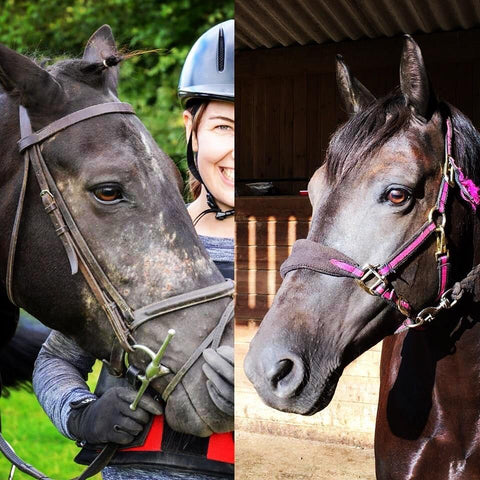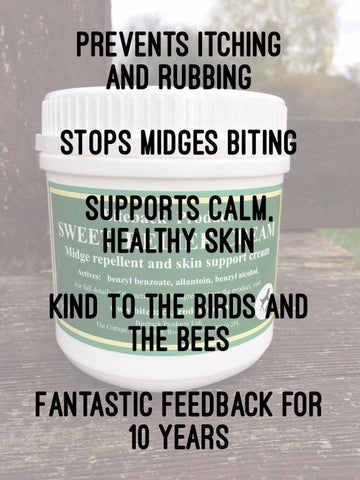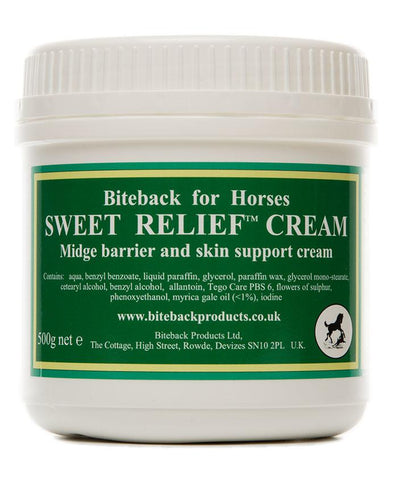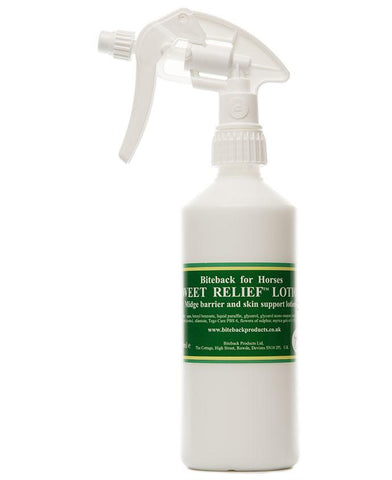Owners of equines that suffer from sweet itch (Queensland itch) will know what a frustrating condition it is, both for horse and owner. In this blog we discuss the causes, symptoms, treatment and management of sweet itch. We are delighted that, as the newly appointed regional distributors of Biteback Products, we can now assist Australians and New Zealanders in the fight against this distressing condition.
What is sweet itch?
Sweet itch is a skin condition thought to be caused by hypersensitivity to the bites of insects, in particular midges of the family Culicoides. Research indicates the cause is an allergic reaction to chemicals in the saliva of the midge. When this reaction occurs, certain chemicals are released in the skin causing localised irritation, which the horse will try to scratch and rub, often to the point of rubbing away all hair and creating painful sores.
The midges tend to feed around the tail, head, withers, and base of the mane. They are most active at dawn and dusk and like to breed on wet land, and around dams, rivers and lakes.

Not all itching or rubbing in horses is caused by sweet itch, but your equine veterinarian should be able to accurately diagnose the condition. There is no cure as such but there are steps you can take to manage it.
What are the symptoms of sweet itch?
Symptoms vary from horse to horse, but usually include one or more of the following:
- Itching focused on the neck, mane and tail, although these areas are not exclusive and some horses may end up rubbing and biting at their skin wherever they can reach.
- Affected areas appear lumpy or scaly, inflamed or hot to the touch, but you may also just notice areas where the hair appears ruffled and rubbed.
- Scratching may cause hair loss, bleeding and thickening of the skin.
- Skin may look scurfy or dull in patches, although it is a symptom which could indicate a different condition.
- Some horses become restless and in the worst cases may lose weight.
- Sweet itch is typically a seasonal condition (spring and summer) but it is common for affected horses to show increasingly severe symptoms over time and so some will experience problems all year round.
Regular grooming is a good way to keep a close eye on your horse's skin so you can recognise any changes and take action quickly.

Sweet itch sores
How can sweet itch be treated or managed?
The interventions against sweet itch fall into two categories: those that are designed to prevent the condition starting in the first place and those which are mainly about remediating the symptoms and behaviour which have begun to cause damage. These two categories can be referred to as Prevention and Remedy.
Prevention
The following measures can help prevent the midge bites that cause sweet itch.
- Fly-rugs with good coverage, such as the Mark Todd Air Mesh Combo. The worst affected horses will probably need to wear a fly rug 24/7 so it's worth investing in a rug fits well, is comfortable and hard-wearing.
- Fly repellents. There is a huge range of types and brands. A traditional spray or cream application is always a good option but you may also find repellent bands and tags helpful in controlling mosquitos and midges. Products with pyrethroid or permethrin-based ingredients are often the most effective. DEET is effective but can cause soreness in some horses.
- Stabling. Biting insects tend to be most active at dawn and early evening or dusk so try to keep your horse stabled during these times. Midge screens over stable doors and windows can help keep insects at bay. This may sound like an extreme option but even just one or two midges making their way through the defences can cause widespread clinical signs.
- Insecticidal sprays can be helpful in the stable area and it can also be worth installing fans as midges don't like moving air.
- Midges lay their eggs in the soft mud after feeding so areas with standing water should be avoided wherever possible. Windswept areas have a lower midge population than sheltered locations where the air is very still. Try to avoid thick tree lines too for the same reason. A paddock on top of a blustery hill would have the lowest concentration of midges.
Remedies
Unfortunately there is no real cure for sweet itch and it is simply a case of putting measures in place to stop the midges biting wherever possible while also relieving symptoms.
- Steroids (prescribed by your vet) can offer relief from the clinical signs (skin irritation and itching) in the short to medium term. However, over the long term steroids increase the risk of laminitis so this is not a sustainable solution.
- In some cases, antihistamines can help relieve the symptoms but must be administered in relatively high quantities, making this an expensive and often ineffective option. These should only be used if advised by your vet.
- Anti-itch shampoos can help reduce itching.
- Bathing with ice or cold water to cool the affected areas can provide temporary symptomatic relief.
- Research has shown that omega 6/3 fatty acids can be effective in reducing itching so it may be worth feeding flax seed or evening primrose oil in case this offers some relief.
How do Biteback products help?
Biteback has specifically developed a range of products to help prevent and relieve the symptoms of itch. Click the image below (Sweet Relief Guide) to see the full range on our website.
Biteback Sweet Relief Cream and Biteback Sweet Relief Lotion combat itching in horses with a two-pronged approach, incorporating both prevention and remedy. Firstly, they form a physical barrier to biting bugs and, secondly, they have a rejuvenating, moisturising effect on skin and encourage hair re-growth.
The products are plant-based, and Biteback chooses traditional, safe and natural (wherever possible) ingredients that do not pose a threat to ecosystems. All of their products are carefully made in England with top-quality ingredients.
Biteback recommends starting usage in very early spring and carrying on through to autumn, applying each day to mane, tail and other areas targeted by midges. The skin should start to appear revitalised within a week.

Applying Biteback Sweet Relief Cream to areas targeted by midges
Biteback Products have been widely used in the UK and around the world for almost a decade with fantastic results and feedback.

Before and after using Biteback Sweet Relief Cream
Biteback Products are available on our website. As the exclusive distributor in the region, we are also seeking stockists in Australia and New Zealand - please email sales@grosvenorparkproducts.com.au for details.





